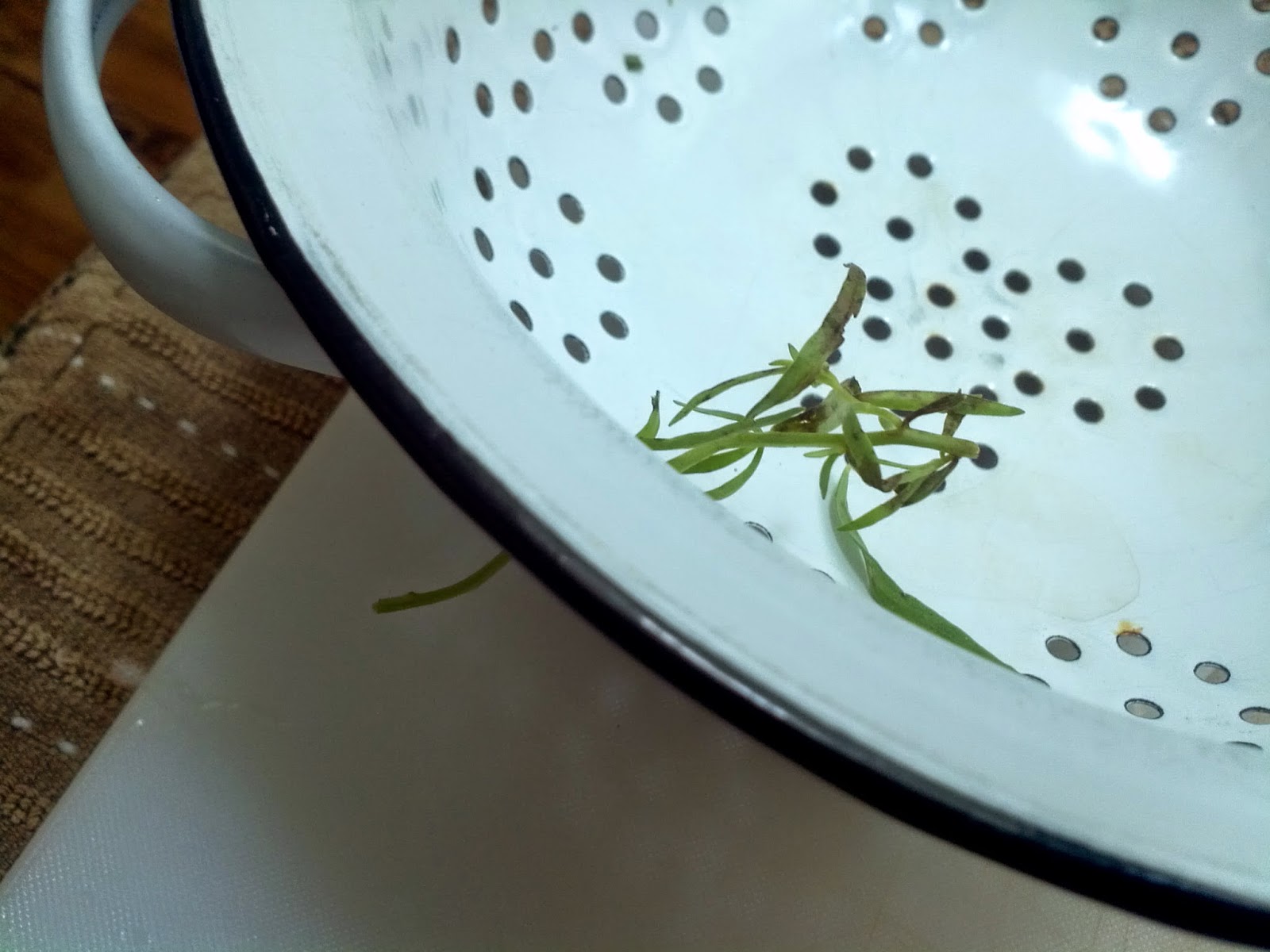We were at a an event where appetizers were passed around. One of the finger food dishes was baby baked potatoes split and topped with sour cream and chives. Perfect one bite non-messy finger food. They tasted so good, that we just had to them at home. These potatoes are small waxy potatoes - not the kind one usually bakes. So, what to do?
The answer - bake them in a bed of salt. The salt has several effects. It keeps the potatoes off the base of the cooking vessel so that the bottoms don't burn in the high heat of the oven; it seasons the potatoes; it provides some insulation when serving them so they don't cool off too quickly. Also they look quite pretty.
The picture is a "before" picture. We were too busy devouring them to take an "after" picture. We served them with grilled lamb chops, stir fried cabbage, mint sauce and lashings of butter.
The answer - bake them in a bed of salt. The salt has several effects. It keeps the potatoes off the base of the cooking vessel so that the bottoms don't burn in the high heat of the oven; it seasons the potatoes; it provides some insulation when serving them so they don't cool off too quickly. Also they look quite pretty.
The picture is a "before" picture. We were too busy devouring them to take an "after" picture. We served them with grilled lamb chops, stir fried cabbage, mint sauce and lashings of butter.
Ingredients
Several evenly sized small red/white waxy potatoes (3/4" to 1" diameter)
Enough kosher salt to cover the base of your cooking vessel to the depth of about 1/2 inch
Method
Pre-heat the oven to 425F
Wash the potatoes and pat dry. They don't need to be bone dry. The salt will take care of that
Place the salt evenly in the bottom of a casserole dish. Try and avoid bare metal because salt can be corrosive. I used a Le Creuset casserole dish.
Place the potatoes into the salt bed, pushing down slightly so each potato is abut 1/3 covered. Place the larger potatoes near the edge of the dish and the smaller ones near the center. The edge gets hotter quicker, so they turn out cooked at about the same time.
Put the dish onto the center rack of the oven and cook for about 20 minutes. Turn the heat down to 300 and cook for another 15 - 30 minutes. The time range is there to give you a bit of a margin of safety. They are done before 30 minutes, but they will hold their heat nicely - if for example you forgot to heat the grill for the lamb chops. But that is another story





















